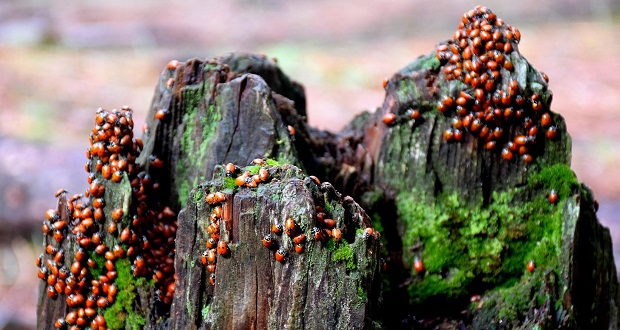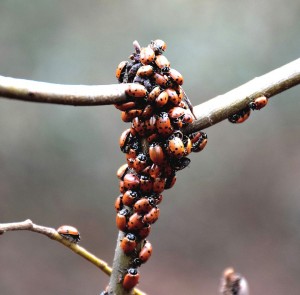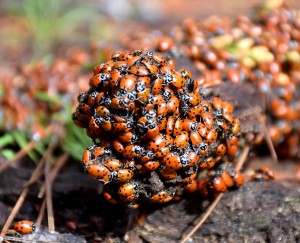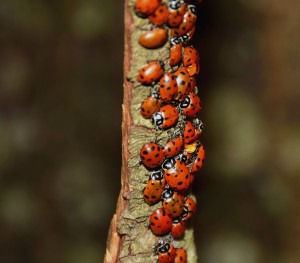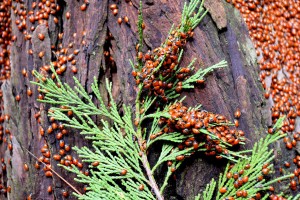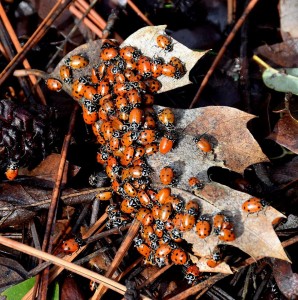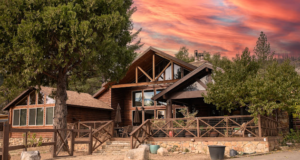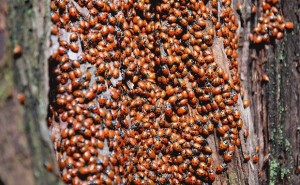 BASS LAKE — “It’s that time of year when the ladybugs are moving on the creeks,” says area resident Paul Adelizi, who took advantage of a break in the rain to observe and photograph what he calls, without exaggeration, “an incredible sight.”
BASS LAKE — “It’s that time of year when the ladybugs are moving on the creeks,” says area resident Paul Adelizi, who took advantage of a break in the rain to observe and photograph what he calls, without exaggeration, “an incredible sight.”
Also called lady beetles and lady birds, the scientific name is Hippodamia convergens = convergent lady beetle. They are predaceous as both larvae and adults, and among their favorite meals are aphids. The larvae resemble tiny alligators, and grow into adults with orange or red forewings and often twelve or thirteen spots. Many individuals of this sort of beetle have fewer spots and some, as seen in Adelizi’s photos, have no spots at all.
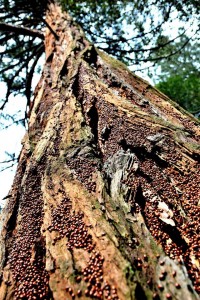 The thorax of the convergent beetle is black with two converging white lines inside, and a white margin, hence the name. Their eggs are laid on end in groups on leaves and stems, ideally near aphids. If there’s one of these anywhere in California, chances are they overwinter in the Sierra Nevada. In spring, adults fly down the mountains to coastal and valley areas.
The thorax of the convergent beetle is black with two converging white lines inside, and a white margin, hence the name. Their eggs are laid on end in groups on leaves and stems, ideally near aphids. If there’s one of these anywhere in California, chances are they overwinter in the Sierra Nevada. In spring, adults fly down the mountains to coastal and valley areas.
“One year I saw a swarm that flew directly over a creek, following it down stream,” recalls Adelizi. “It was like a two level stream. Wish I had my camera then.”
We’re glad you had your camera this week, Paul. Thanks for sharing the photographs.
Click on images to enlarge.

